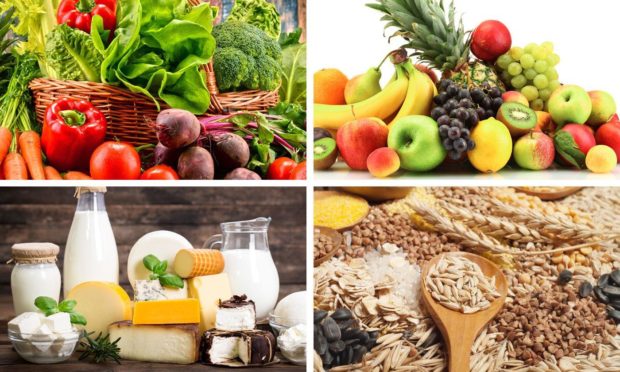Growing numbers of people are trying a diet that bans the likes of onions, wheat and even apples – with three-quarters reporting health benefits.
Low-Fodmap diets are a relatively new invention, having been developed by Australian researchers in 2005.
Since then they have been endorsed by the NHS and even major food and drinks brands including Kellogg’s.
They have also been studied extensively by experts across the world, including at the Rowett Institute in Aberdeen.
The diets are largely aimed at sufferers of Irritable Bowel Syndrome (IBS), which is thought to affect around one in five people in the UK, and focus on certain foods and how they break down in the body.
Studies have shown more than 70% of people trying it have experienced fewer symptoms as a result.
What is a low-Fodmap diet?
Fodmap stands for Fermentable Oligosaccharides, Disaccharides, Monosaccharides And Polyols, which are types of sugars found in foods with carbohydrates.
While most people can stomach them without any issues, problems can arise quickly for those with gastrointestinal disorders.
Dietician Laura Tilt explains: “For people who don’t have IBS, they’ll pass through the guts without much consequence – they actually help to feed the microbes that live in our large intestine.
“But for people with Irritable Bowel Syndrome, Fodmaps have the ability to trigger gut symptoms like pain and bloating, and they can aggravate a change in stools.
“As they move through your gut they attract water, which can exacerbate diarrhoea.
“Then, when they reach the large intestine, they’re very easily fermented or consumed by the microbes that live there.
“They produce gas, which happens in everybody, but this stretches the walls of the gut.
“People with IBS have hypersensitive gut walls so for them, as they stretch, it causes pain and discomfort.”
How does the diet work?
The NHS says difficulties with Fodmaps are usually not caused by one specific food, but a combination of many.
Typically, doctors will first recommend changes to diet and lifestyle – looking at the likes of alcohol intake and exercise – before telling a patient to consider a low-Fodmap diet.
To start with, patients are advised to cut all foods with high concentrations of Fodmaps from their diet – but for no more than eight weeks.
If they have noticed their symptoms beginning to improve, they can start reintroducing high-Fodmap foods, one at a time, to find which ones can trigger illness.
As it continues, patients are told to eat as regular a diet as they can, limiting just the items which make them ill.
What can I eat?
While a low-Fodmap diet does sound restricting at first, there are still many foods people can eat without triggering their symptoms.
Laura, who also hosts The Gut-Loving Podcast, added: “There’s nothing inherently unhealthy about Fodmaps.
“They have the same effects in people with and without IBS in terms of how they function and move through the gut.
“But for people who have IBS, it can trigger or exacerbate their symptoms.”

